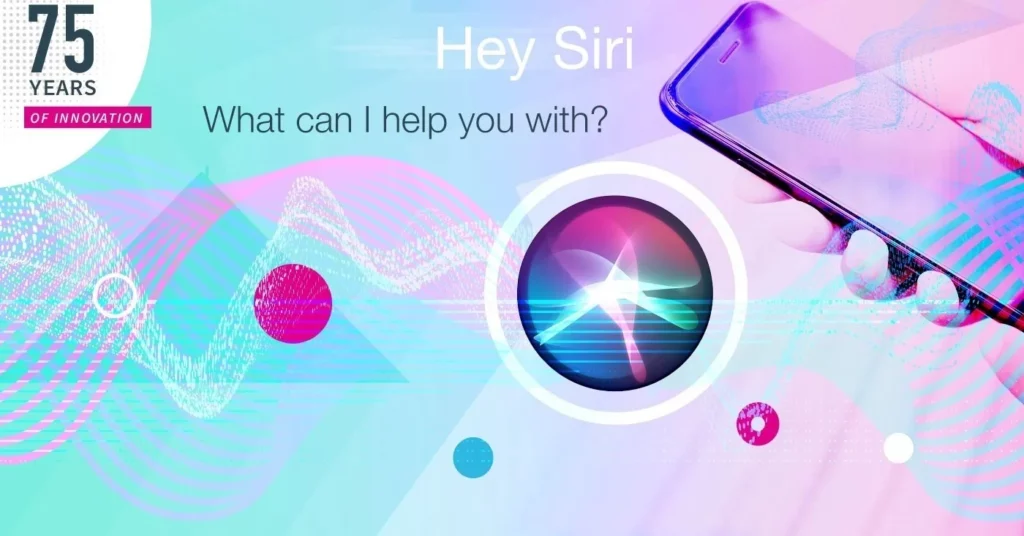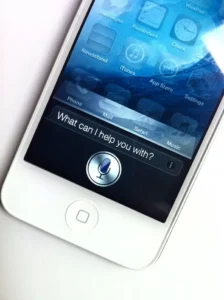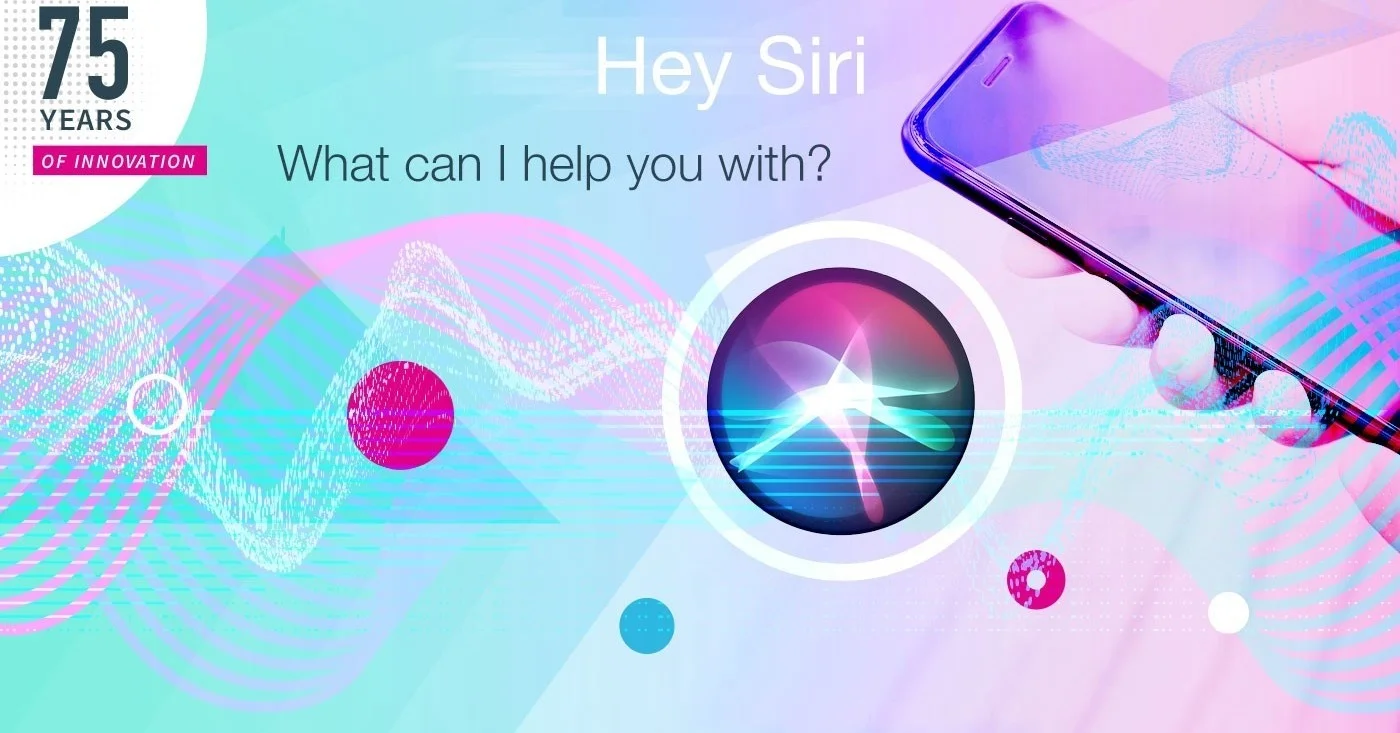How Siri entered the world and gave computing a voice
The 75 Years of Innovation series highlights the groundbreaking innovations spanning from SRI’s founding in 1946 to today. Each week, SRI will release an innovation, leading up to its 75th anniversary in November 2021.

In the movie, “Her” starring Joaquin Phoenix (Theodore), a lonely man falls in love with an Artificial Intelligence-based virtual assistant. The virtual AI assistant of the story, Samantha, grows more ‘human-like’, engaging verbally with Theo, helping to steer him through a difficult period in his life.
The movie may be an invented story, but human beings are social animals. We are adept at anthropomorphizing everything we come across. Making up voices and characters for everything from our dog to our car. So, it is not surprising then, that we now reflect ourselves in our computers, allowing our voices to take command and create dialog.
Siri, the first virtual assistant with a voice, which responded by way of technologies based on Artificial Intelligence (AI), was born of this desire to make our interactions with computers more ‘human-like’. Now an integral part of the Apple iPhone, Siri was born at SRI International.
This is Siri’s story…
Siri awakening: the planets align
In the development of Siri, technological planets aligned.
The team used a mixture of speech recognition and Natural Language Processing (NLP) to drive the innovation known as Siri. Using these technologies, Siri was trained to answer questions: After initiating a wake-up phrase, e.g. “Hey Siri” a person could then ask a question, for example, “What’s the weather like in Menlo Park today Siri?”. The resultant audio file would then be sent off to remote servers; speech recognition software being used to transcribe the words into text. These words were then passed to the Natural Language Processing software to interpret.
The innovation and leap into new territory happened at the interpretation stage. Language is complex; a sentence can have multiple meanings and there are many ways to say the same thing; accents make the task of interpretation even more difficult.
An SRI International invention advanced the field of NLP via the DECIPHER project. This project was instrumental in the development of advanced speech recognition technology developed by an SRI spin-off, Nuance Communications; this technology was later used by Siri.
The NLP software behind Siri uses the AI subsets of machine and deep learning, along with large datasets of real human voices, to train Siri to recognize the complexities of tone, accent, and intent in human language. Being able to interpret human language was a major steppingstone in the development of effective personal digital assistants for consumer use.
The place of Siri in the history of technology

The development of Siri was influenced by the U.S. Defense Advanced Research Projects Agency (DARPA) program exploring the idea of a “cognitive” software assistant. Perceptive Assistants that Learn (PAL) was the part of the DARPA program looking at creating cognitive computing systems. SRI International was awarded $22 million in 2003 to develop a personalized cognitive assistant under the PAL program. SRI named this project CALO, for Cognitive Agent that Learns and Observes.
SRI International spun-off a company dedicated to developing Siri which it named Siri, Inc. In 2010, Apple acquired Siri and an integrated version of the digital assistant appeared in the iPhone 4S in 2011.
How a computer-generated voice made us sit up and take notice
Adam Cheyer of Siri, Inc., is said to have placed a picture of Douglas Engelbart on his desk at SRI International for inspiration. Several decades earlier, Engelbart, a visionary and also an SRI alumnus, invented the Computer Mouse. Siri was an inspired evolution in Human-Computer Interaction, born of the same ideologies of the humble computer mouse — technology being advanced by simulating human interactions using “people-first” principles of design.
Siri was first in class. The voice of computing entered the world and from her/him/its dulcet tones, spawned new voice-activated personal digital assistants. Voice commands are another way to explore the Human-Computer Interface (HCI) and one which feels very natural to a human being. The global market for voice-activated digital assistants is expected to grow to $7.7 billion by 2025. Human voices are powerful. Throughout our evolutionary history, the ability to communicate using the spoken word has been part of our very humanity. Using SRI International innovation in NLP and speech recognition, Siri took the silent world of the computer and filled it with voices.
A side note of interest: Siri is often mistakenly associated with the acronym “Speech Interpretation and Recognition Interface”. However, the Siri team have always maintained that Siri is not an acronym. Instead, Dag Kitlaus, one of the Siri co-founders, wanted something short and unusual; he proposed Siri as this was an obscure woman’s name in Scandinavia.
Resources
Apple’s Siri website: https://www.apple.com/siri
DARPA, Siri: https://www.darpa.mil/about-us/timeline/personalized-assistant-that-learns
Press release, SRI awarded $22 million to develop a personalized cognitive assistant: https://www.businesswire.com/news/home/20030716005586/en/SRI-International-Awarded-DARPA-Contract-Develop-New
SRI’s DECIPHER System, Cohen, M., et. al., Speech Research Program, SRI Int., February 1989: https://www.researchgate.net/publication/234810357
WSJ, Apple Moves Deeper Into Voice-Activated Search With Siri Buy, 2010: https://blogs.wsj.com/digits/2010/04/29/apple-moves-deeper-into-voice-activated-search-with-siri-buy/
Apple Insider, Nuance confirms its voice technology is behind Apple’s Siri, 2013: https://appleinsider.com/articles/13/05/30/nuance-confirms-its-technology-is-behind-apples-siri
Zion market Research, Global Voice Assistant Market to 2025: https://www.globenewswire.com/news-release/2019/05/10/1821574/0/en/Global-Voice-Assistant-Market-Will-Reach-USD-7-7-Billion-By-2025-Zion-Market-Research.html
Apple. Inc., press release announcing Siri, 2011: https://www.apple.com/uk/newsroom/2011/10/04Apple-Launches-iPhone-4S-iOS-5-iCloud/



